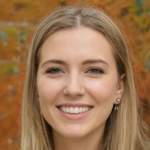Bi-Weekly and Semi-Monthly Payroll for Business Owners - The Full Guide
According to a recent study, approximately 40% of small business owners have stated that payroll and bookkeeping is the worst task when it comes to running their business. Running payroll is one of the most tedious tasks for any business owner, however, it is also one of the most important. After all, your employees work as hard as they can to receive payment and if you do not pay them, then all sorts of problems will occur.
When you hire employees, you need to decide what kind of payment scheme and schedule you are going to pay them by. Not only does this payment schedule have to be convenient and right for your employees, but it also has to fit in with the requirements that are best suited for your business as well.
If you find that the usual monthly payments is not the right option for you, it’s essential to look at your other options which may be better suited. As a small business owner, you have most likely come across the terms biweekly and semi-monthly payments before, although you may not know what they mean.
In this guide, we’ll be taking you through biweekly and semi-monthly payments in depth by explaining what they are as well as the advantages and disadvantages that come with these forms of payment. This allows you to determine which option is right for your business and for your employees.
Also read: Tips To Improve Employee Morale Remotely

Biweekly Pay
The first option you need to look into is biweekly pay. This is the most form of pay period as approximately 36.5% of private businesses based in the US pay their employees on a biweekly schedule. Biweekly pay means that payment is made every two weeks and usually falls on the same day with Friday being the most common day for payment.
Depending on how the calendar falls, this could potentially mean that you are actually paying your employees three times in a month, but this isn’t a common occurrence.
Biweekly payments are made on a day of the employer’s choosing, and it is up to the business owner to ensure that the employees are receiving their regular payments on the same day every other week.
Also read: Branding Your Business For 2022
Advantages and Disadvantages of Biweekly Pay
It’s important to understand the advantages and disadvantages of biweekly payments so you can decide whether it is going to benefit your budget as a business owner or if it is the right kind of payment for you if you are an employee.
Also read: 5 Ways To Keep Track Of Your Businesses Income And Expenses
Advantages
Here are the advantages that come with biweekly payments:
Boosting Morale
Biweekly payments are a great way to boost your employees’ morale as it ensures that they constantly are having their bank accounts replenished.
Preventing Errors
It helps to minimize and prevent payroll errors as you will be utilizing your payroll system more frequently compared to monthly pay where issues are more likely to occur.
Saving Money
Lastly, biweekly payments are a great way to save money as it is great for your pocketbook, especially if you use a payroll provider that allows you to carry out unlimited payroll runs meaning that you can determine how often you are paying your team.
Also read: Use A Customised Invoice For Your Business
Disadvantages
Here are the disadvantages that come with biweekly payments:
More Budgeting
Firstly, the main disadvantage that comes with biweekly payments is that you will need to carry out more extensive and careful budgeting. This is because there are approximately two months that will come with extra pay due to the way that the weeks fall meaning that you will have to monitor the balance sheets closely.
Planning Well in Advance
Following on from extensive budgeting, you will also have to ensure that you are planning well in advance. This is because biweekly payments mean that you are running the payroll 26 times a year, equating to two months with three payments. Make sure that your planning accounts for this to prevent any grievances with staff.

Smaller Pay
This is more of a disadvantage for employees as they will be paid more often but this, in turn, means that their paycheck is going to be a smaller amount compared to semi-monthly payments.
Also read: 8 Signs Your Invoicing Isn’t Right
How Many Biweekly Payments Are Made in a Year?
If you are a business owner who has employees and has made the decision to make biweekly payments, it’s important to make sure that you incorporate this into your budget.
Figuring out how many payments will be made each year is very simple. This is because there are 52 weeks in a year, and you are making payments every two weeks meaning that you will be making 26 biweekly payments per year.
Semi-Monthly Pay
The second option we will be discussing is semi-monthly payments. This option is not as commonly used as approximately 19.8% of private businesses utilize this form of payment on a regular basis. Semi-monthly payments mean that your employees are paid twice a month on certain days. These payment days usually fall on the 15th of the month and the last working day of the month.
Due to the nature of semi-monthly payments, it is often used interchangeably with bi-monthly pay, but they are completely different terms. This is because bi-monthly payments mean that your employees are paid once every other month.
Advantages and Disadvantages of Semi-Monthly Pay
Just as we discussed with biweekly payments, it’s essential to look into the advantages and disadvantages of semi-monthly payments, so you can determine whether it is right for your business.
Advantages
Here are the advantages that come with semi-monthly payments:
Consistency
The first advantage that comes with semi-monthly payments is that they provide consistency which is ideal for your employees, but also for you as a business owner. This is because the payments are made on a regular basis on specific dates.
Easier to Make Deductions
Semi-monthly payments also make it easier for you to make deductions as you will be running the payroll twice a month. This means you can track any payroll expenses and calculate your deductions quickly and simply.
Higher Paycheck
Lastly, semi-monthly payments equate to a larger paycheck for your employees which means that they will feel more rewarded and valued. However, they are less frequent than biweekly payments, so if you are unsure which payment option to go for, you can get feedback from your employees to find out their preferences.
Disadvantages
Here are the disadvantages that come with semi-monthly payments:
Overtime Calculations
The first disadvantage you need to consider is that you will need to spend more time calculating your employees’ overtime payments. This is because certain pay periods might have extra days, especially if the allotted payment day falls on a weekend or public holiday. Therefore, make sure you are keeping track of how much overtime you owe your staff.
Scheduling Issues
The second disadvantage you should be aware of is that semi-monthly payments can cause scheduling issues. This follows from overtime calculations as scheduling issues can arise if the payment date falls on a weekend or public holiday. This means you’ll have to determine whether to pay your staff on a working day either before or after and clearly communicate this to them. You can alternatively run the payroll over the weekend.
How Many Semi-monthly Payments are Made in a Year?
Just like biweekly payments, figuring out how many semi-monthly payments are made in a year is incredibly easy. This is because semi-monthly payments are made twice a month, so you will be running the payroll 24 times each year.
Other Options
You may be asking yourself whether there are any other options. The simple answer is: yes! If you don’t mind running payroll on a frequent basis, then you can choose to adopt a weekly payment schedule. This is the second most popular choice for small business owners as a whopping 32.4% of small businesses pay their employees in this way.
The best thing about paying your employees weekly is that you will run the payroll on the same day each week meaning that you will have fewer scheduling issues as well as ensure that there are no problems with the payroll itself.
Weekly payments also mean that your employees will have a regular income of money in their bank accounts and can make it easier for them to calculate their own budgets, especially if they have weekly payments that they need to make in turn.
Bear in mind, however, that weekly payments mean that you are going to be using the payroll software more often. Due to the nature of weekly payments, this means that you will be running payroll 52 times a year, which is a lot more than either biweekly or semi-monthly payments.

Conclusion
In conclusion, although biweekly and semi-monthly payments may be used interchangeably, they are completely different forms of payment, and it’s essential to understand the advantages and disadvantages that come with each, so you can determine whether it is the ideal choice for your business.
You’ll find that applying the best payment schedule for your business will result in a smoother running of the business itself. This is because you will be able to budget and plan accordingly, and it will ensure that your employees feel valued and rewarded for their work.
If you haven't got the most efficient way to produce pay stubs, then check out our pay stub maker today. So simple and convenient!















